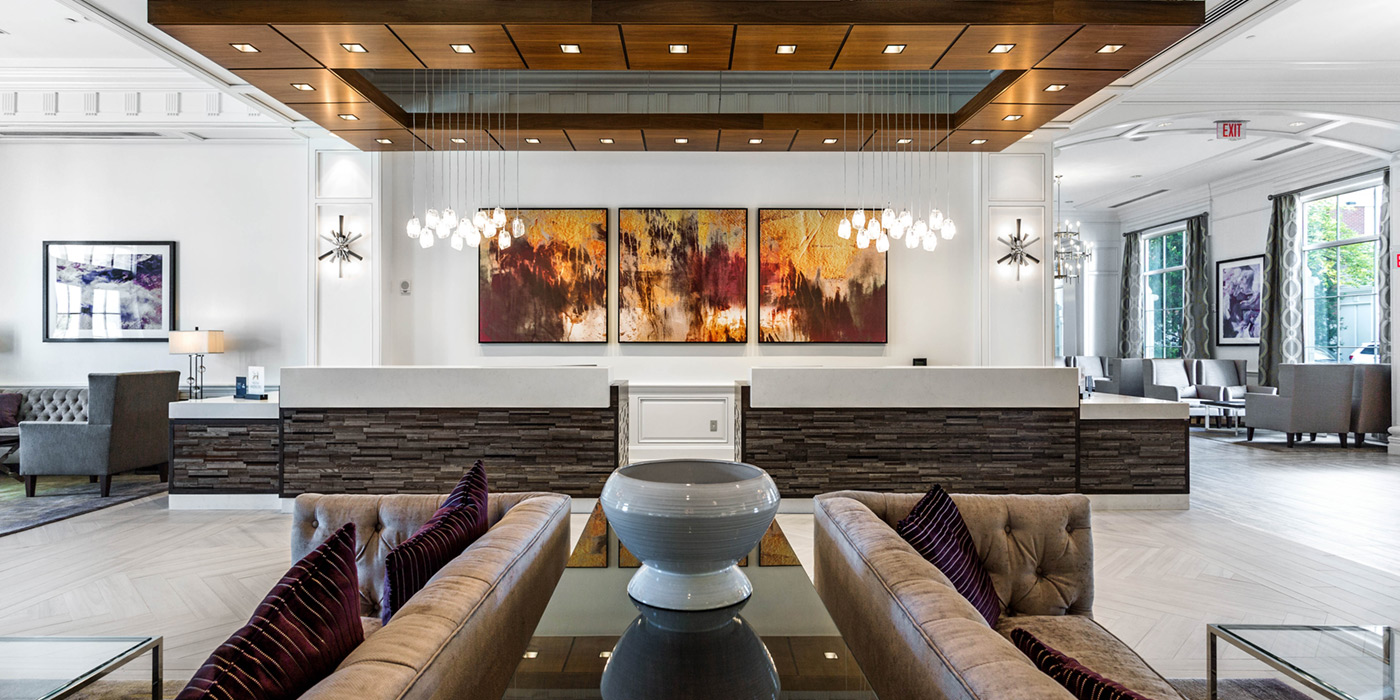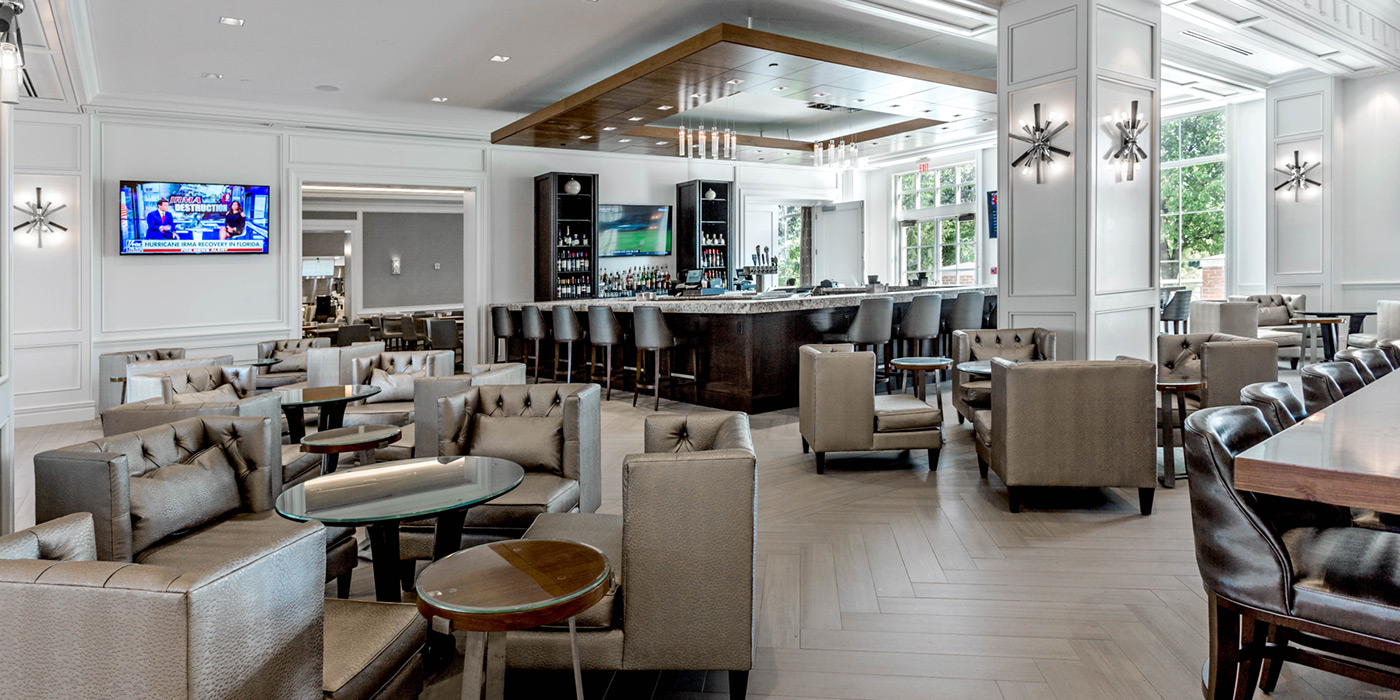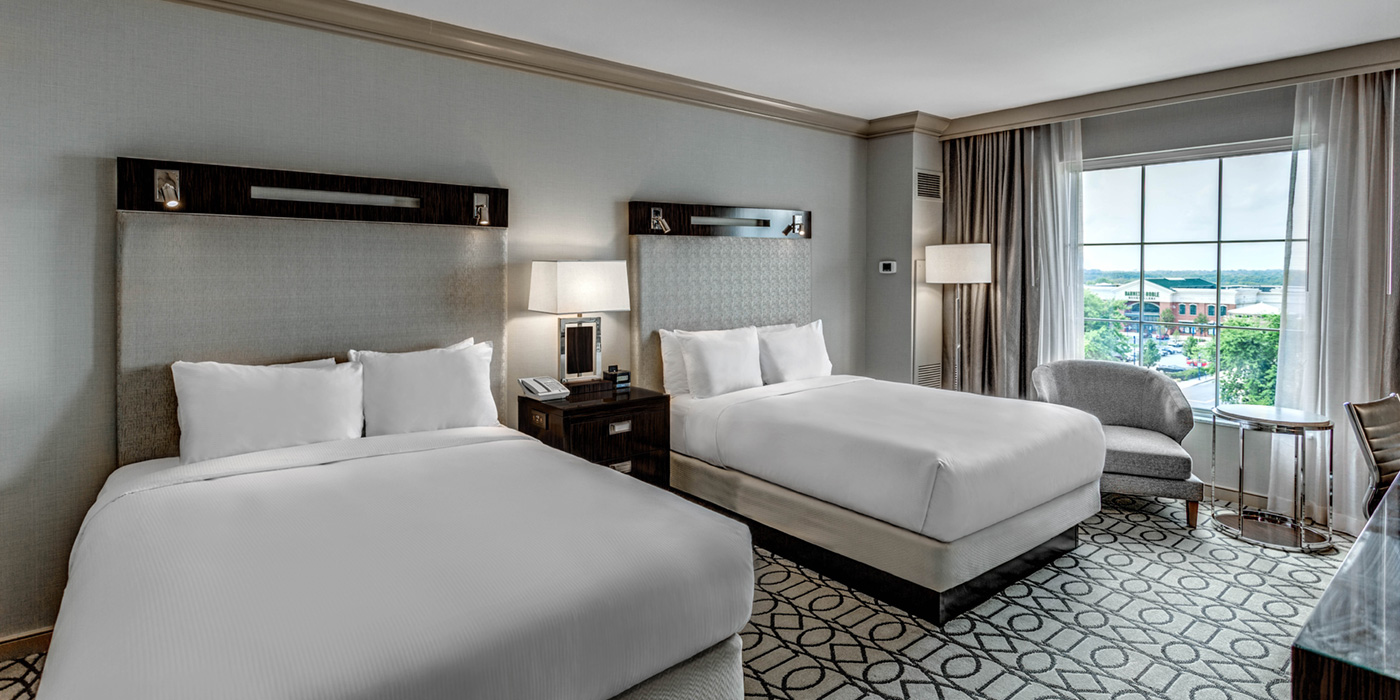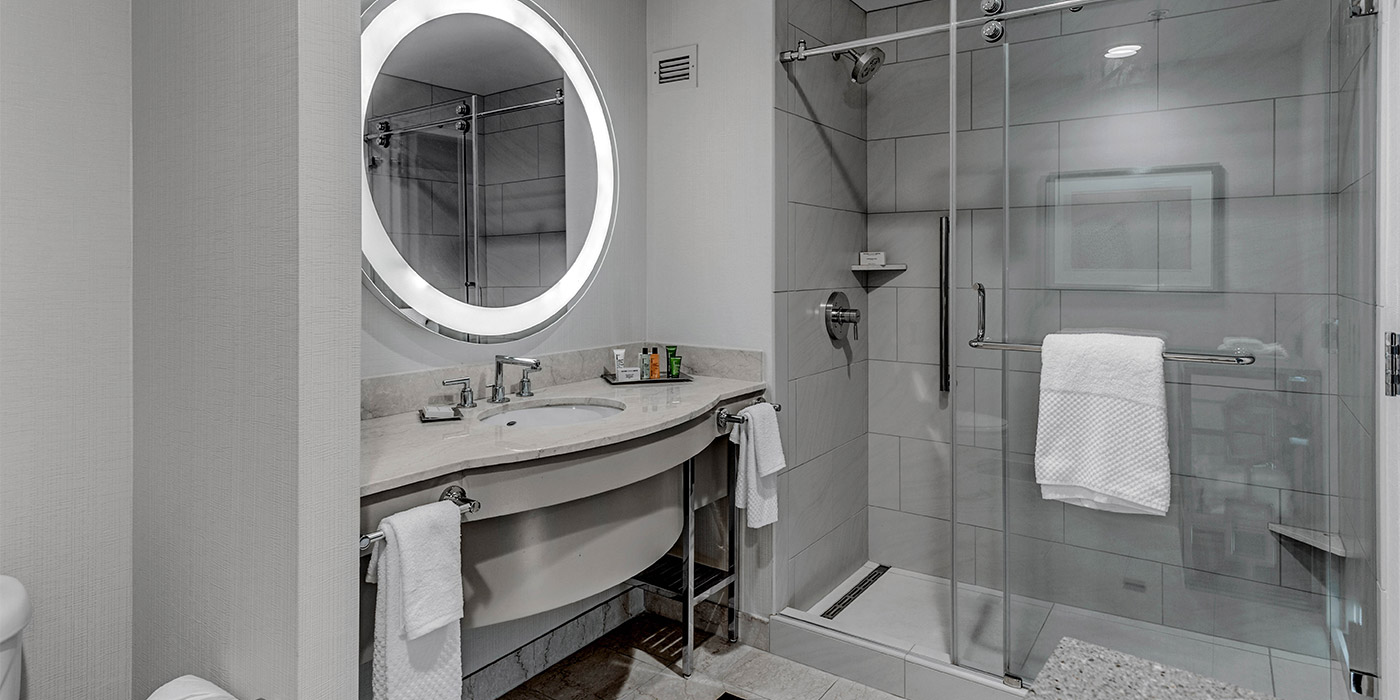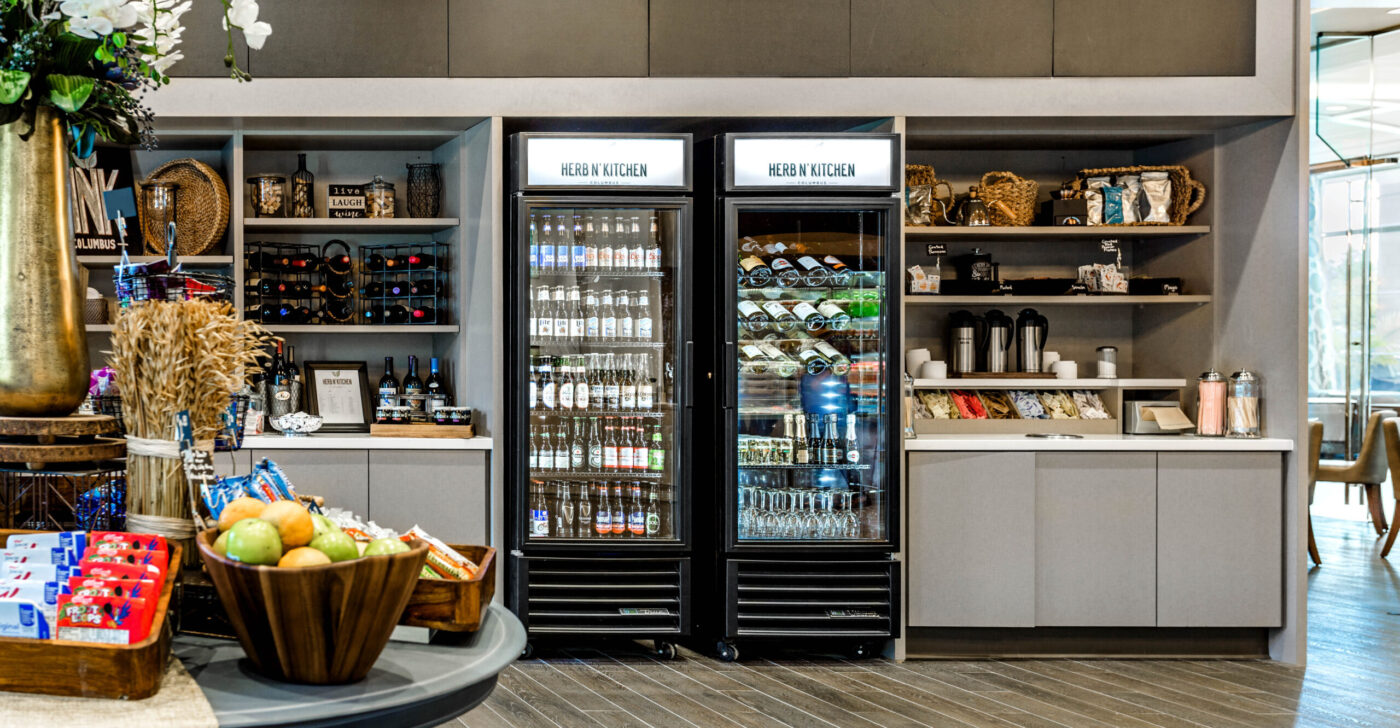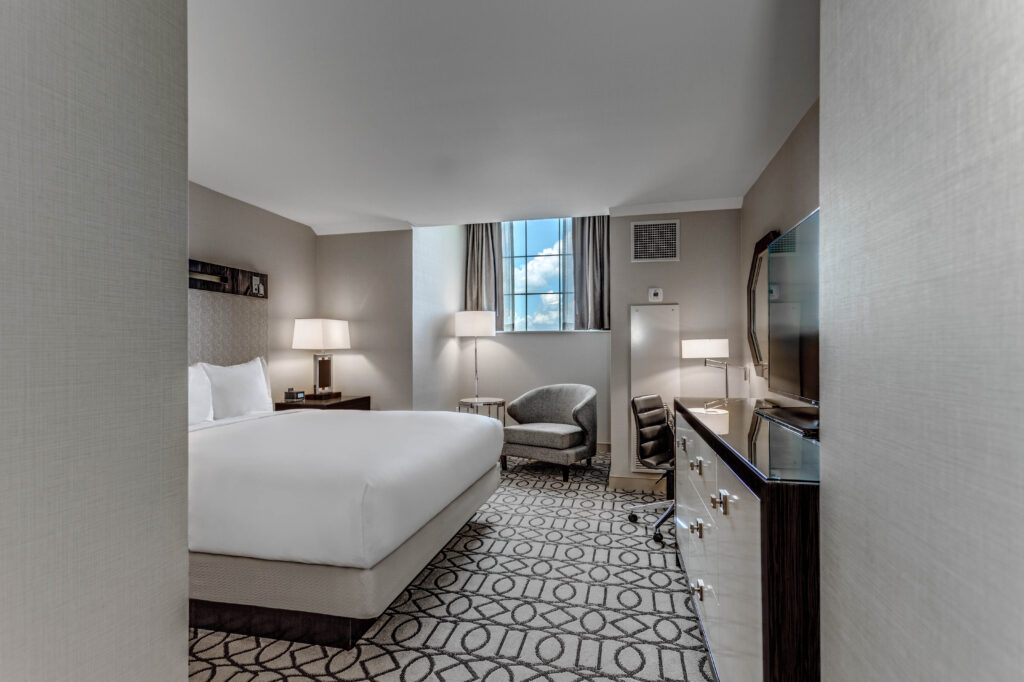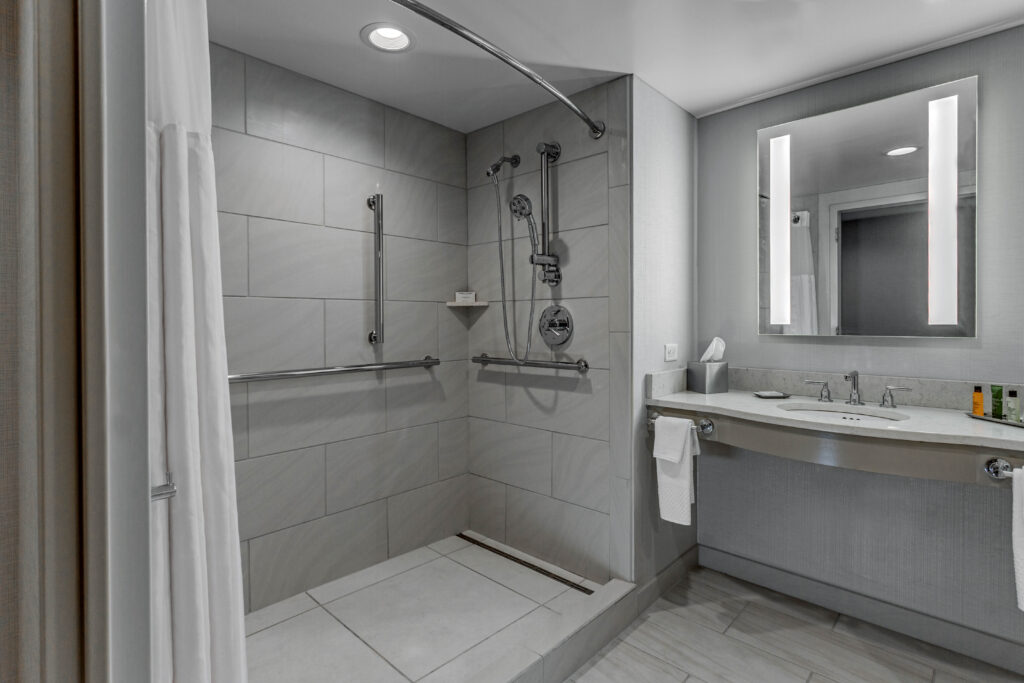The Hilton at Easton Renovation
Challenge
A national hotel company dreamed of a modern renovation while continuing business as usual.
Services Involved
- BIM + 3D Scanning
- Architectural Services
- Construction Administration
- MEP Engineering
- Permitting
- Project Management
- Structural Engineering
- Feasibility Study
The Hilton at Easton sought the help of the ms team to renovate the 71,760 square-foot first floor and to expand guest rooms to the hotel’s fifth floor, converting unoccupied space into a valuable expansion for this land-locked hotel.
The Hilton at Easton Renovation
Contemporary Transformation
The ms team designed with Hilton’s brand standards in mind and customer satisfaction first. The first-floor renovation included:
- Herb N’ Kitchen Urban Kitchen
- Hilton’s Gourmet Marketplace
- Classy Bar and Lounge
- Wood-fired Pizza Oven
To make these modern spaces possible, the ms team executed the architectural and engineering design to replace the existing kitchen. Our consultants updated a 2,700 sq. ft. kitchen for an efficient layout, relocating the plumbing and electrical systems to install new equipment for a state-of-the-art kitchen. These renovations increased revenue by allowing the hotel to expand catering opportunities.
Customer-First Renovation
ms consultants met the challenge of keeping the existing facility open and operational throughout design and construction. During the renovation, the ms team and subconsultants did the following:
- Maintained a safe, clean, quiet, and functional environment.
- Consistent communication with hotel operators and construction partners.
- Created efficient schedule to honor existing event space reservations.
- Placed customer satisfaction as our top priority.
Energy Updates
In addition to the guest experience and aesthetic enhancements, the Hilton at Easton’s entire first floor also received a complete lighting system upgrade.
Beyond energy inefficiency, the banquet facility’s previously existing halogen downlights burned out regularly and caused weekly maintenance. Upgrading the lighting system included several notable effects:
- Reduced the lighting load by 219,000 watts.
- Projected to save $80,000 in annual utility costs.
- Awarded case utility incentives apart from monthly utility bill savings.
Transforming an Attic into Guestrooms
The goal of the transformation – to create 26 modern guestrooms out of an old attic space. Overall process:
- Our consultants studied existing building systems and ensured the additional rooms would not require increases in the water, heating, or other systems.
- We then recognized the need to extend the west stair for access and emergency egress on the fifth floor.
- To enhance customer experience, dormers were added to each guestroom for natural light to complement the Georgian architectural style.
BIM 3D Scanning Technology
To better understand the existing fifth floor space, ms used 3D scanning to document the existing conditions. The 3D point cloud was then used to create a Building Information Model (BIM) using Revit.
While using 3D scanning, BIM, and Revit, the design team quickly learned that the existing drains and vents in the floor varied dimensionally from room to room. These seemingly small issues would have major consequences for the Hilton at Easton renovation.
These dimensional variations in the floor caused individual room sizes to vary by as much as three inches from room to room. This had immediate consequences on the design of the floor plan.
The value of using these technologies was quickly realized by identifying the issue early in the design phase.
A Common Challenge – Shower Doors
In hospitality projects, shower doors are one of the largest lead-time construction specialties other than furniture.
By understanding and documenting the as-built dimensional characteristics, the construction team was not surprised by the disparity in room sizes for the Hilton at Easton. This resulted in a more accurate bid and a construction schedule that accounted for variations in a long-lead-time element.
With the use of 3D scanning and other technologies, the Hilton at Easton’s fifth-floor renovation was completed efficiently and without any unwanted surprises.

